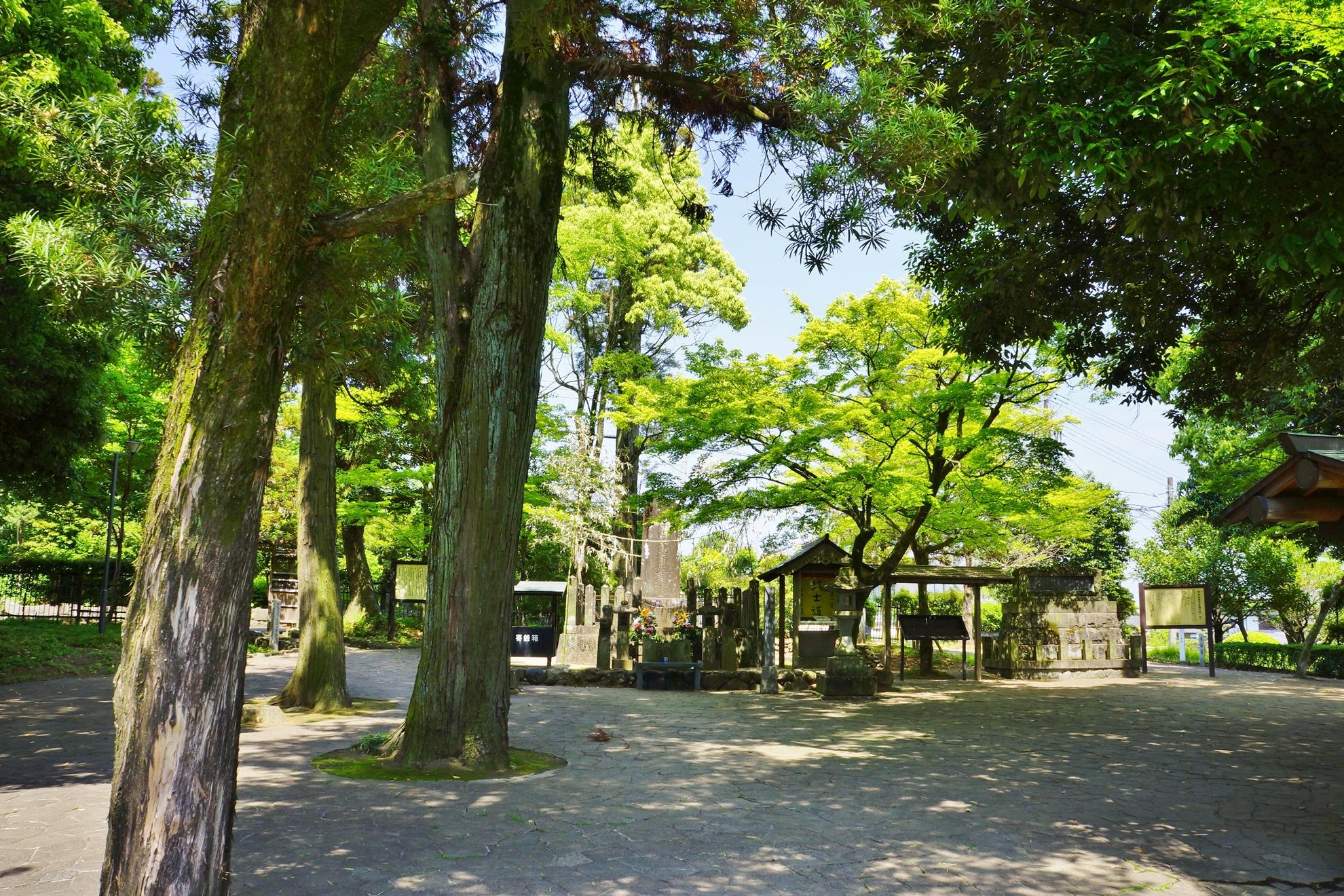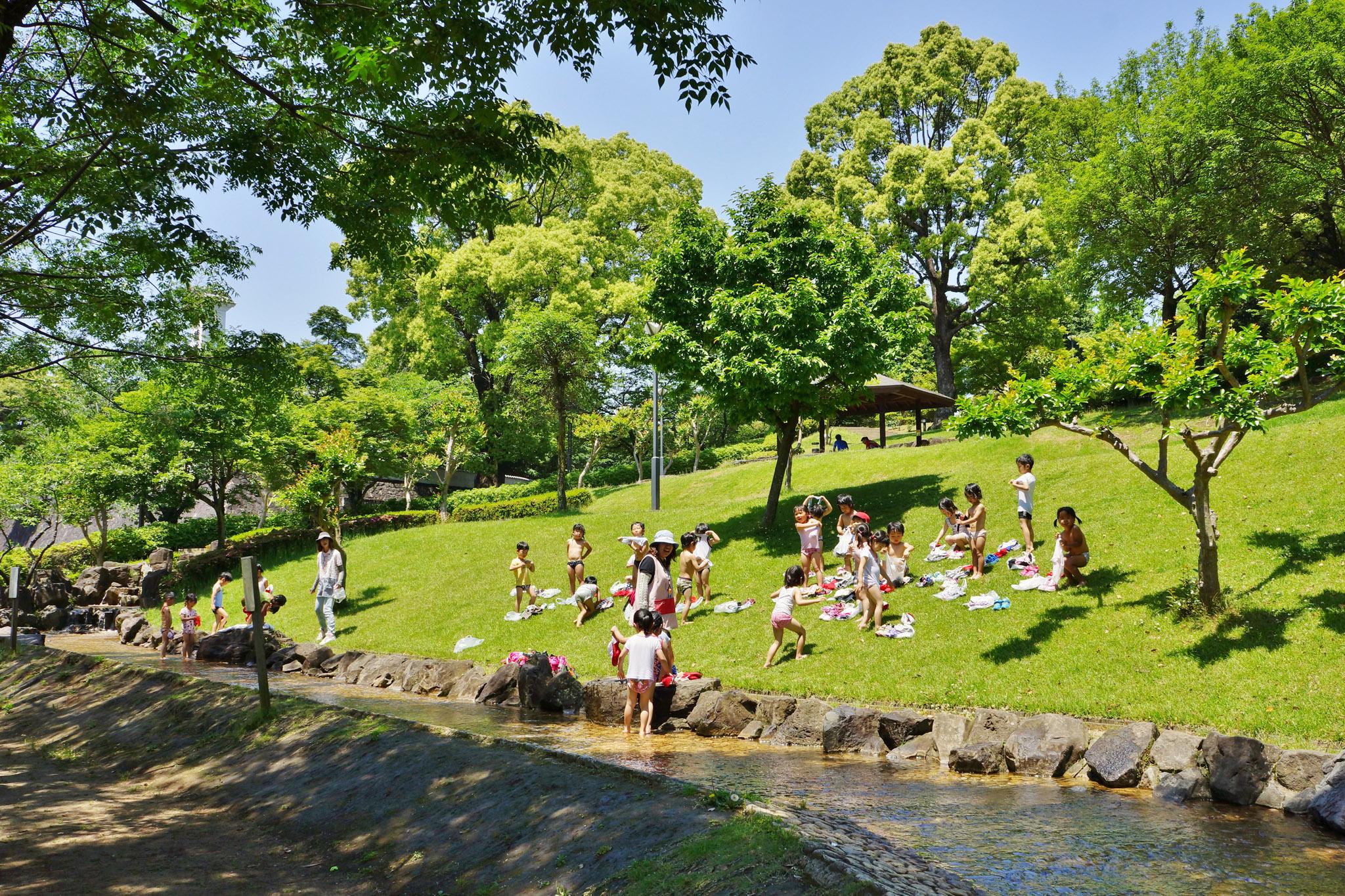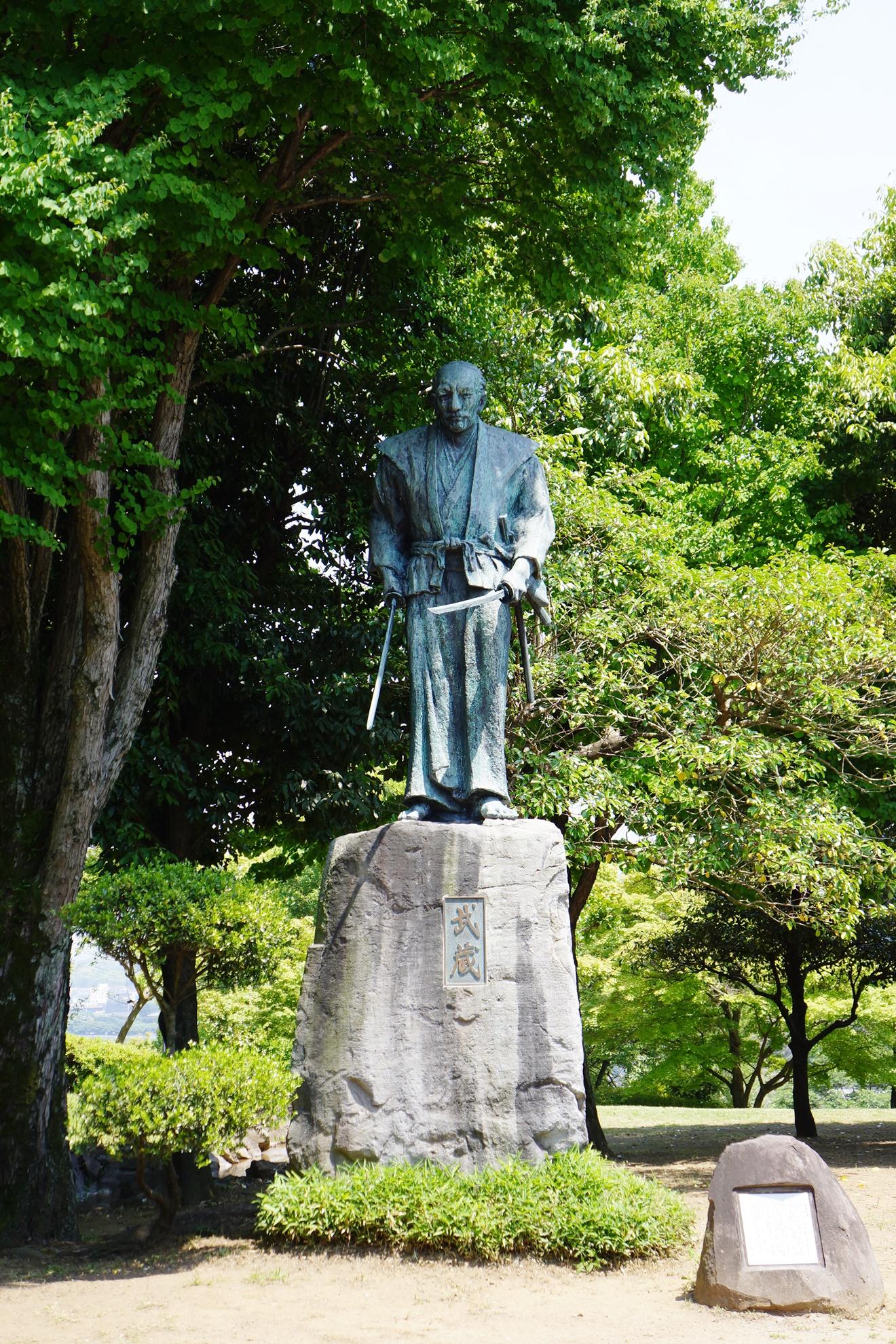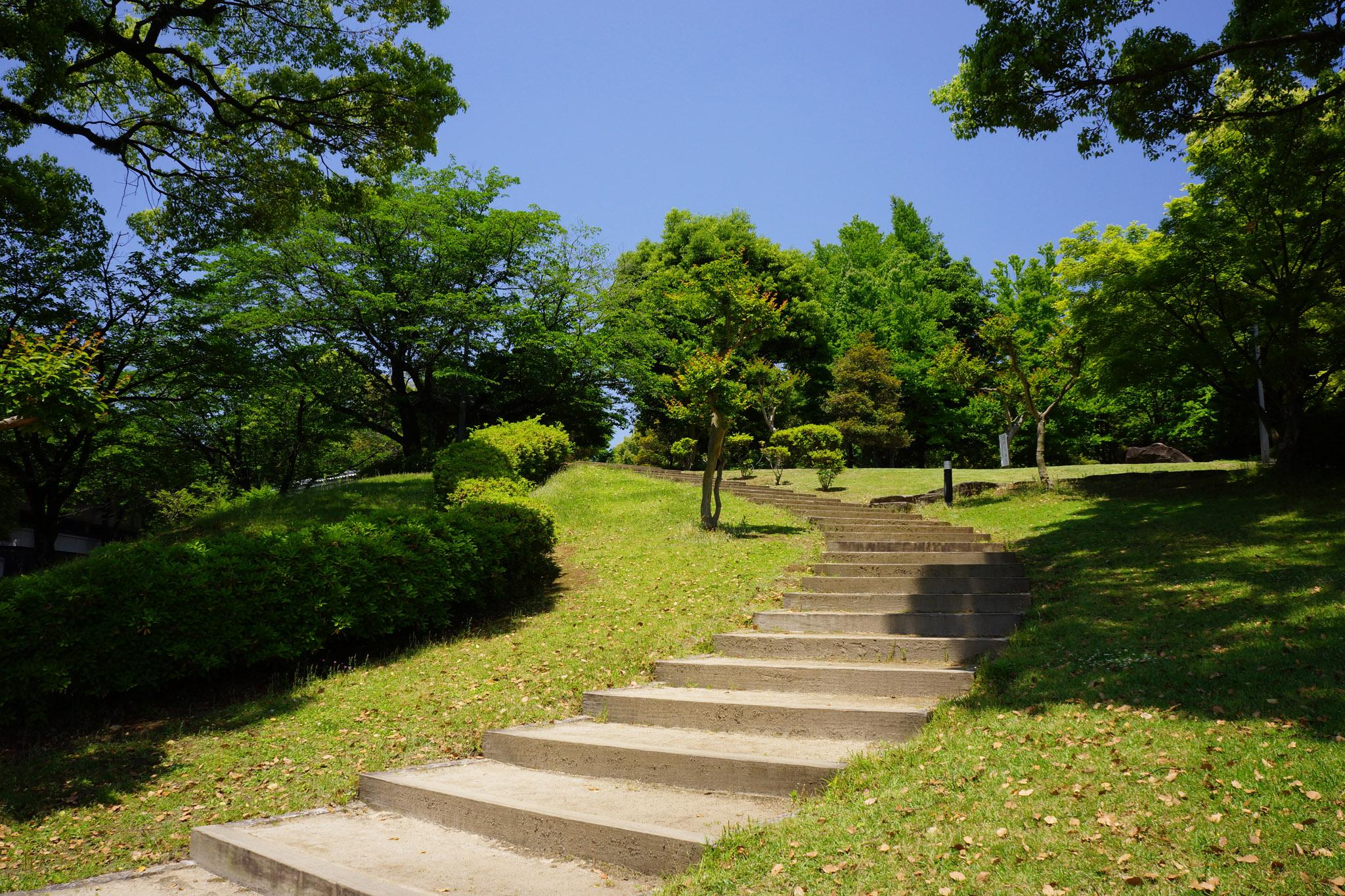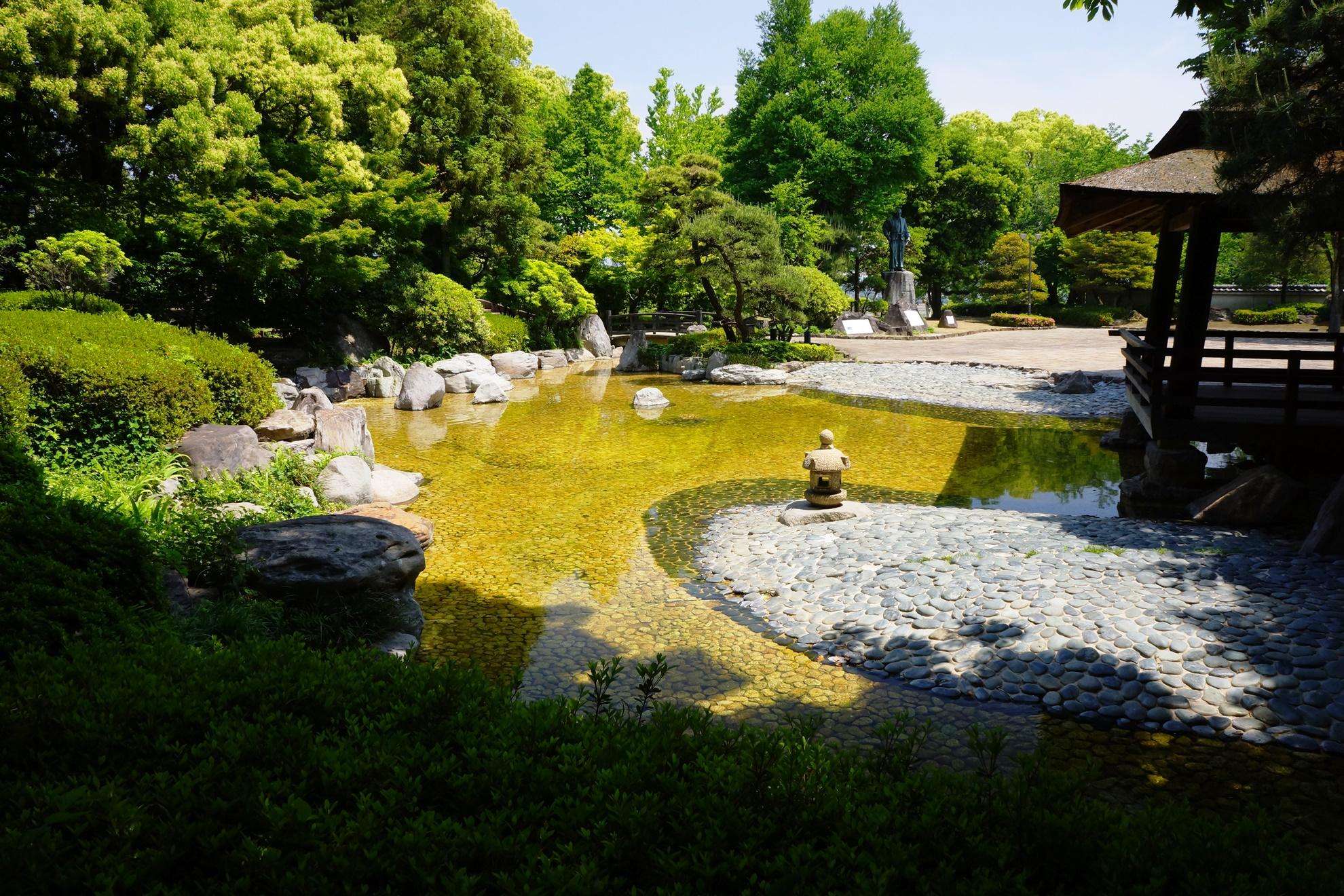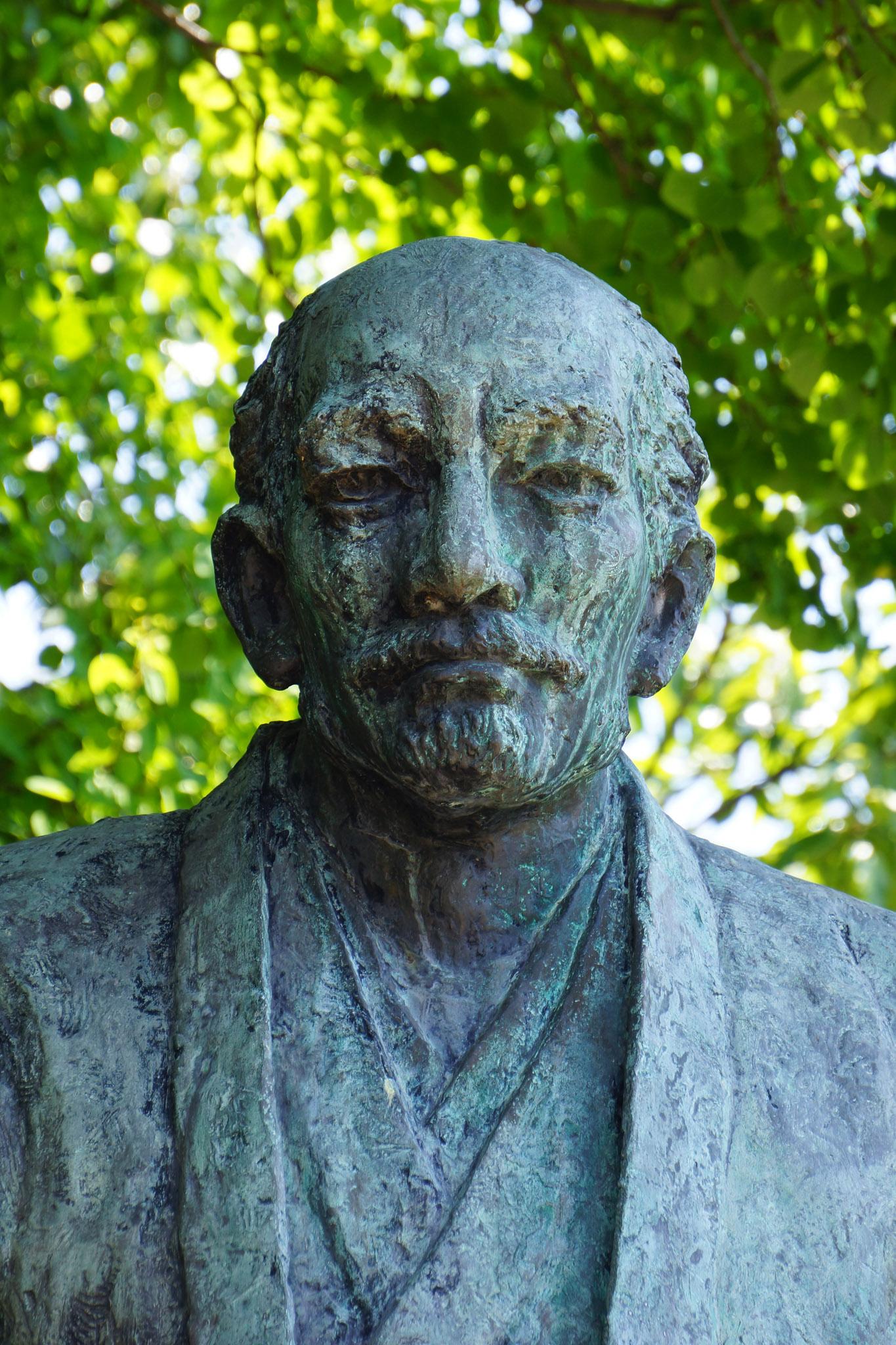Of the three possible burial sites of swordsman Miyamoto Musashi (1584–1645) in Kumamoto, Musashizuka Park in the eastern part of the city of Kumamoto is considered to be the most plausible. Musashi spent the last five years of his life in Kumamoto under the patronage of the local lord Hosokawa Tadatoshi (1586–1641) and Tadatoshi’s successor Hosokawa Mitsunao (1619–1650). According to legend, he was so loyal to the Hosokawa clan that he arranged to be buried standing upright in full armor and helmet in order to watch over them even in death. Since Musashizuka Park stands along the old road leading to Edo (current Tokyo), which the Hosokawa family would have traveled often, it makes better sense as a guard post than the other two possible locations for his grave. The park has a bronze statue of Musashi at the entrance armed with his two trademark swords. There is a Japanese garden and a teahouse in the park.
Miyamoto Musashi
The details of the life of master swordsman Miyamoto Musashi (1584–1645) are vague. Born in Harima Province in Hyogo Prefecture, he claimed to have fought and won 60 duels by the age of 29—his first being at the tender age of 13 against Arima Kihei, a master swordsman of the Shinto school. This set the pattern of Musashi’s life, which consisted of wandering around Japan on a “warrior pilgrimage,” honing his original two-sword fighting technique, and challenging other swordsmen to prove his superiority. Musashi may have helped Toyotomi Hideyori (1593–1615) against the Tokugawa shogunate in the 1614–1615 siege of Osaka Castle, and he may have helped the Tokugawa shogunate suppress the Shimabara Rebellion in 1637, but historians cannot be sure.
Musashi’s Last Years
Musashi’s connection with Kumamoto began in 1640, when Hosokawa Tadatoshi, the first-generation Hosokawa lord of Higo Province, invited him to Kumamoto, possibly to teach swordsmanship. Musashi, who was already in his late 50s by that time, spent much of his time meditating, painting (he was a distinguished ink painter and calligrapher), and writing. Aware that he did not have long to live, he shut himself away in the Reigando Cave in the foothills of Mt. Kinpo where he wrote The Book of Five Rings, a work that set forth his philosophy of swordsmanship and life in five chapters entitled “Earth,” “Water,” “Fire,” “Wind,” and “Void.” He finished the book in 1645 and gave the manuscript to Terao Magonojo, one of his disciples, before he died, later that year. According to legend, he was buried standing upright in full armor on one of the roads leading into Kumamoto so that he could watch over his lord even in death.

